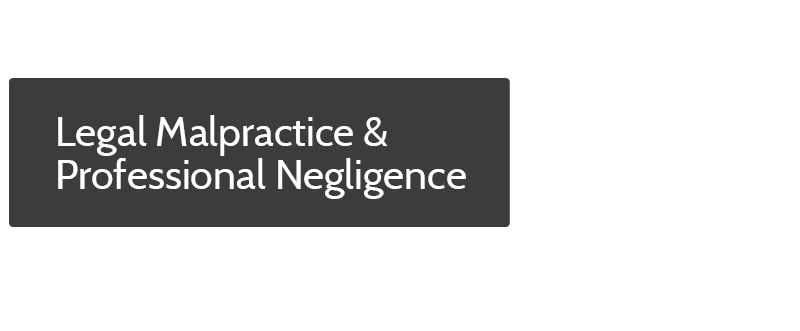The Elements of Attorney Malpractice
An attorney who fails to provide competent, ethical representation may incur civil liability to the client as well as discipline from the California Bar Association.
PROFESSIONAL DISCIPLINE
The California Bar Association establishes standards of conduct (professional and ethical) for all licensed attorneys practicing in the state. These standards apply to California practitioners and to counsel from other states who practice law or represent clients in California (including the need to act through proper channels to obtain temporary or permanent admission and permission to practice law).
When a client or other person files a complaint about an attorney’s conduct, the Bar Association’s disciplinary committee investigates the complaint to determine whether the attorney has actually acted improperly. Not all complaints result in discipline, because not all actions which frustrate clients (or others) constitute a breach of the lawyer’s duty. Cases, and the results of investigations, vary.
However, if the Bar Association finds that an attorney has breached professional standards or the attorney’s duty to a client, the Bar may take appropriate disciplinary measures against the lawyer. These may include probation, mandatory education or classes, fines, and even the suspension or loss of the attorney’s license to practice law. The attorney’s practice history, and previous disciplinary actions, may be taken into account when determining the appropriate level of discipline.
CIVIL LIABILITY FOR MALPRACTICE
Failure to provide competent representation may be a basis for civil liability as well as professional discipline.
Most commonly, the attorney’s liability is based on “professional negligence” (commonly called “malpractice”) based on the attorney’s lack of competence or on conduct which falls below the mandatory standard of care in representing clients. Other theories also exist, however.
If you believe you have a case for attorney malpractice, you should consult a licensed attorney specializing in this area promptly, in order to learn about and preserve your rights. Specific statutes of limitations limit the time within which you can file a claim for attorney malpractice. In most cases, these statutes require you to file your case within one calendar year after “discovery of the facts constituting malpractice” — but be aware, a client who knew about the attorney’s questionable acts at the time they were committed may have to file within one year of the date the acts were committed. Do not delay, or rely on the fact that you have a certain amount of time to file a case. Seek counsel immediately if you think you have a case for attorney malpractice.
For purposes of evaluating malpractice liability, an attorney’s conduct is evaluated using a “reasonable attorney” standard. Attorneys must behave in a manner equivalent to that which a reasonable attorney with a proper level of skill and knowledge would exhibit in the relevant situation.
In order to be liable for malpractice, an attorney must breach this duty, and the client must be able to show that the situation meets the elements of the relevant legal test(s).
THE BASIC ELEMENTS OF A CASE FOR ATTORNEY MALPRACTICE
Attorneys are “subject to liability for malpractice when … negligent investigation, advice, or conduct of the client’s affairs results in loss of a meritorious claim.” (Stanley v. Richmond (1995) 35 CA4th 1070, 1092, 41 CR2d 768, 780)
The following are the basic elements of a cause of action (a legal claim) for attorney malpractice:
1. Showing that the attorney had a duty to use the reasonable skill, prudence and diligence of a member of the legal profession
2. Proving that the attorney breached that duty.
3. Proving a proximate causal connection between the attorney’s breach of duty and some resulting injury to the client.
4. Proving the client suffered some actual loss or damage as a result of the attorney’s breach.
Although other causes of action may exist, and may have slightly different elements, these are the basic things a client needs to show to demonstrate that an attorney has acted negligently and engaged in malpractice. While it may seem “clear” that an attorney has behaved improperly, a client should never try to conclusively evaluate attorney malpractice on his or her own.
Always seek the advice and counsel of an experienced malpractice attorney immediately if you believe your attorney has acted improperly.
© Ross Law, 2014
















